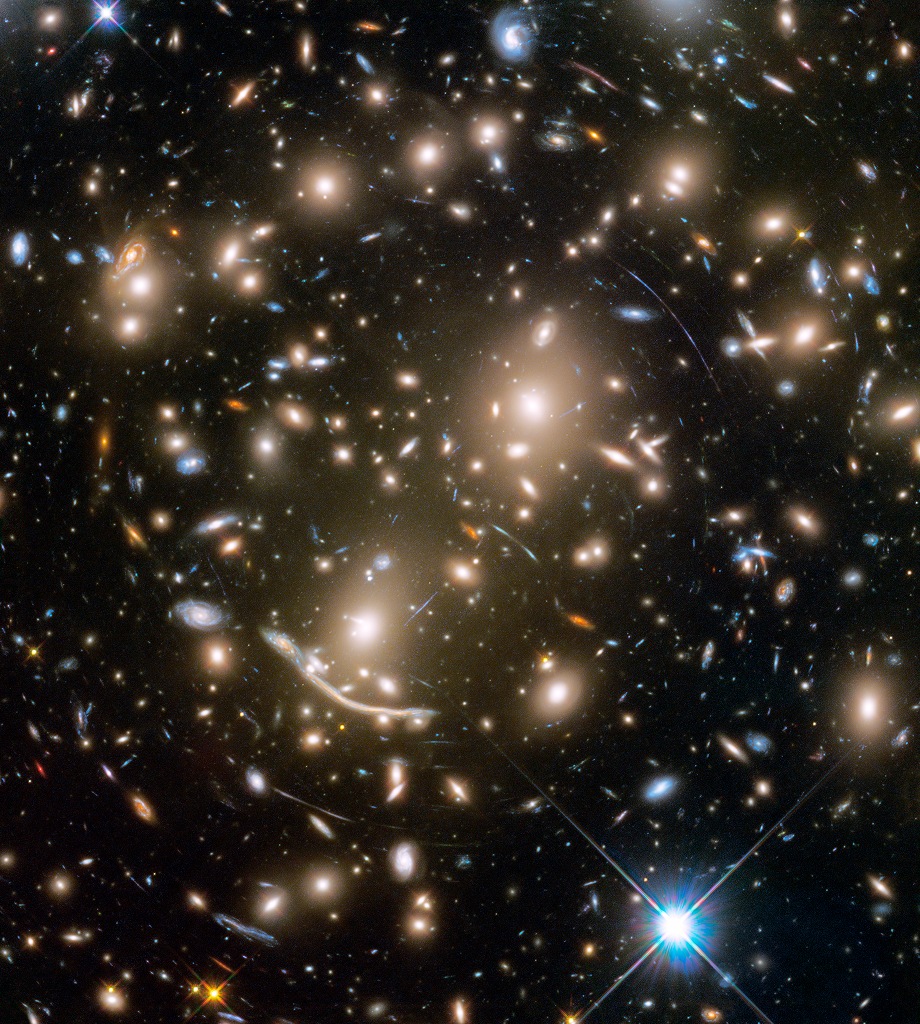2023年9月12日
Galaxy Cluster Abell 370 and Beyond
Image Credit: NASA, ESA, Jennifer Lotz and the HFF Team (STScI)
Explanation: Some 4 billion light-years away, massive galaxy cluster Abell 370 is captured in this sharp Hubble Space Telescope snapshot. The cluster of galaxies only appears to be dominated by two giant elliptical galaxies and infested with faint arcs. In reality, the fainter, scattered bluish arcs, along with the dramatic dragon arc below and left of center, are images of galaxies that lie far beyond Abell 370. About twice as distant, their otherwise undetected light is magnified and distorted by the cluster’s enormous gravitational mass, overwhelmingly dominated by unseen dark matter. Providing a tantalizing glimpse of galaxies in the early universe, the effect is known as gravitational lensing. A consequence of warped spacetime, lensing was predicted by Einstein almost a century ago. Far beyond the spiky foreground Milky Way star at lower right, Abell 370 is seen toward the constellation Cetus, the Sea Monster. It was the last of six galaxy clusters imaged in the Frontier Fields project.
Tomorrow’s picture: partly hidden
星系团Abell 370及后方的天体
影像提供: NASA, ESA, Jennifer Lotz and the HFF Team (STScI)
说明: 这幅清晰的哈勃太空望远镜影像,捕捉到40多亿光年远处的大质量星系团Abell 370之身影。乍看之下,这个星系团里最醒目的天体为2个庞大的椭圆星系和无所不在之暗淡光弧。其实,散布在视野各处、更为昏暗的泛蓝光弧和影像中左下方引人注目的龙形光弧,是远在Abell 370后方的星系之身影。这些距离约远上2倍、原来不可见的星系之星光,受到星系团内以暗物质为主的庞大引力质量之会聚与扭曲,让我们得以隐约窥见这些早期宇宙的星系。这种称为引力透镜效应的现象,是爱因斯坦于1百多年前预言,在时空扭曲的状况下会产生的景观。远在影像右下方带芒银河恒星后方的Abell 370,位在鲸鱼座方向。这个星系团,是前沿星场计划所探索的6个星系团中的最后一个。
明日的图片: partly hidden







